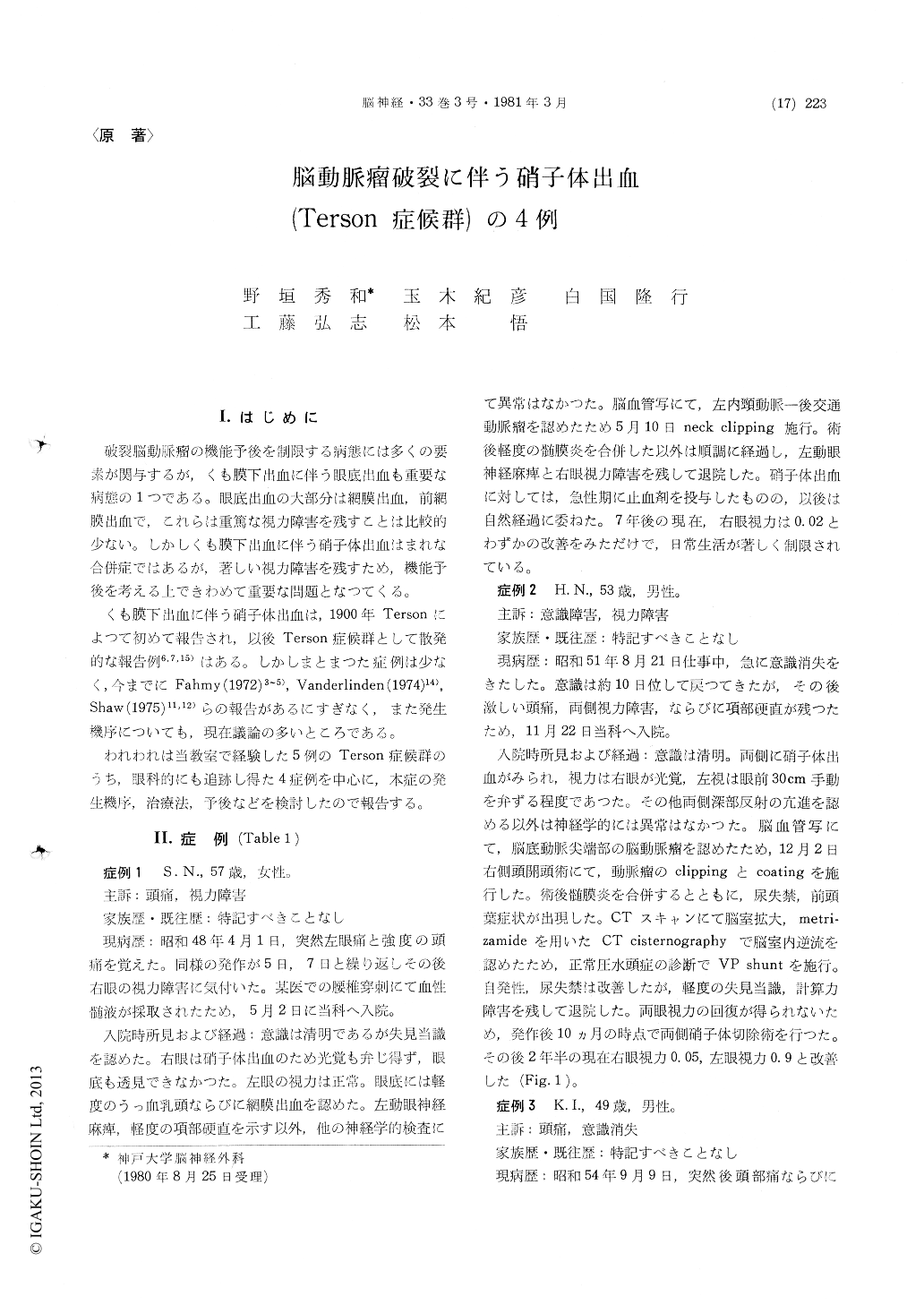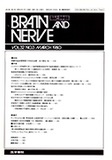Japanese
English
- 有料閲覧
- Abstract 文献概要
- 1ページ目 Look Inside
I.はじめに
破裂脳動脈瘤の機能予後を制限する病態には多くの要素が関与するが,くも膜下出血に伴う眼底出血も重要な病態の1つである。眼底出血の大部分は網膜出血,前網膜出血で、これらは重篤な視力障害を残すことは比較的少ない。しかしくも膜下出血に伴う硝子体出血はまれな合併症ではあるが,著しい視力障害を残すため,機能予後を考える上できわめて重要な問題となつてくる。
くも膜下出血に伴う硝子体出血は,1900年Tersonによつて初めて報告され,以後Terson症候群として散発的な報告例6,7,15)はある。しかしまとまつた症例は少なく,今までにFahmy (1972)3〜5),Vanderlinden (1974)14),Shaw (1975)11,12)らの報告があるにすぎなく,また発生機序についても,現在議論の多いところである。
Operative mortality and morbidity for intracere-bral aneurysms has recently reduced with micro-surgical technique, so more functional prognosis such as visual disturbance due to fundal hemor-rhages has been attentioned. Here vitreous hemor-rhage secondary to ruptured cerebral aneurysms (Terson syndrome) was studied.
Three patients had more over 2 hours of uncon-sciousness and one patient experienced repeated ep-isodes of subarachnoid hemorrhage within a week. This suggested rapid increased intracranial pressure resulted in vitreous hemorrhage through the venous congestion, which had been reported by Castren (1963).
All patients became blind because of severe vit-reous hemorrhage. First case was followed over 7 yeras with only conservative therapy, but failed to improve. Another 3 cases regained visual acuity soon after operation.
We emphasized vitreous hemorrhage as an im-portant functional prognostic factor after ruptured intracererebral aneurysms and effective results of vitrectomy was showed.

Copyright © 1981, Igaku-Shoin Ltd. All rights reserved.


